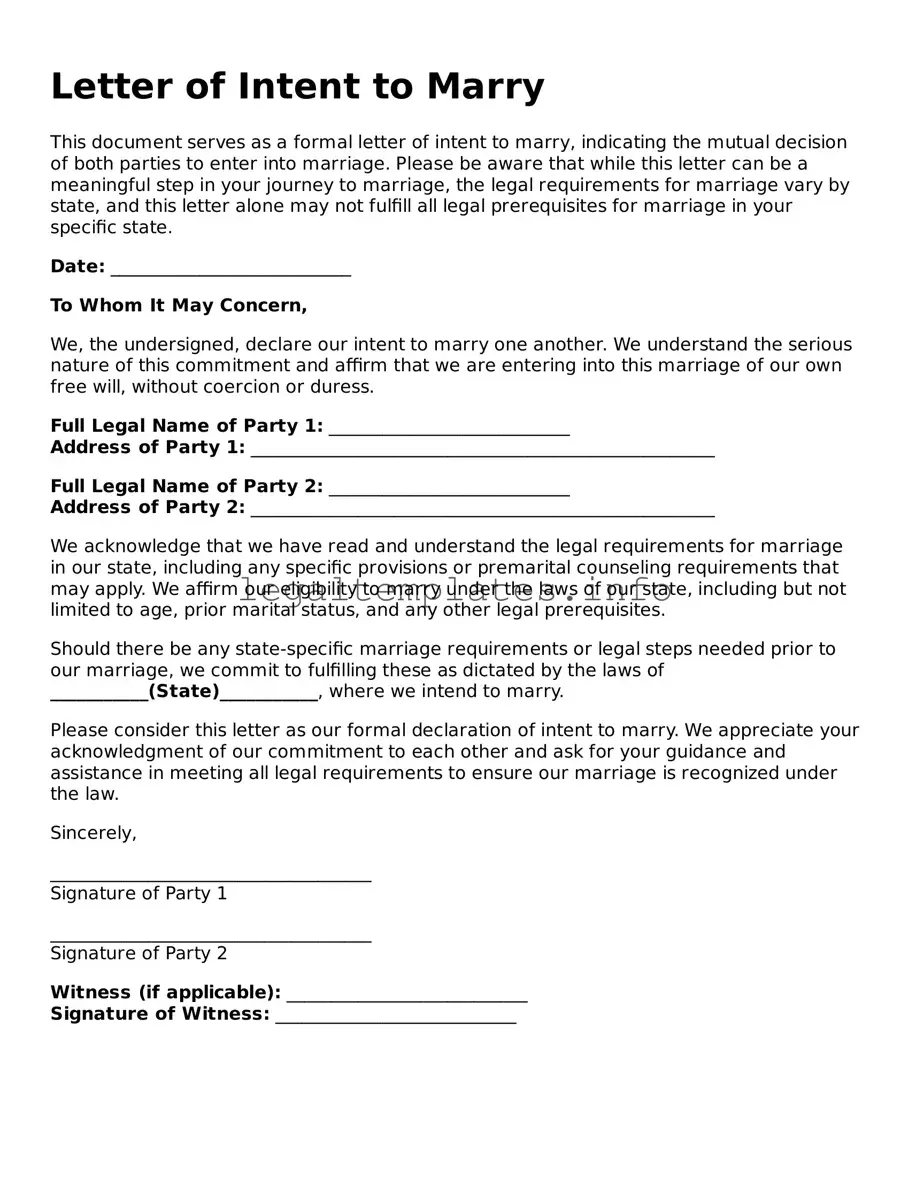What is a Letter of Intent to Marry?
A Letter of Intent to Marry is a document that individuals planning to get married submit to certain authorities, confirming their intention to marry within a specific period. It is commonly used in visa applications, especially for fiancé visas, to prove that the couple has genuine plans to marry.
Who needs to submit a Letter of Intent to Marry?
Typically, both partners intending to get married must submit a Letter of Intent to Marry, particularly when one of the partners is applying for a fiancé visa to the United States. This form is a critical requirement to demonstrate the legitimacy of their relationship to immigration authorities.
What should be included in a Letter of Intent to Marry?
The letter should include the full names of both individuals planning to marry, their signatures, the date when the letter is written, and a clear statement of their intent to marry within 90 days of the foreign fiancé(e)’s arrival in the United States, in the case of a fiancé visa. It may also include personal declarations of love and commitment, although this is not a requirement.
Is there a specific format for a Letter of Intent to Marry?
No official format is required for a Letter of Intent to Marry, but it must be clearly written, signed by both parties, and include the necessary information outlined above. It should be presented in a way that is professional and can be easily understood by the authorities reviewing the visa application.
Can a Letter of Intent to Marry be written in any language?
While the Letter of Intent to Marry can technically be written in any language, if it is being submitted to United States authorities, it should be provided in English to avoid delays in the processing of the application. If the original letter is in another language, a certified translation should accompany it.
Where do I submit the Letter of Intent to Marry?
The Letter of Intent to Marry is typically submitted as part of the fiancé visa application package to the United States Citizenship and Immigration Services (USCIS). It can also be requested by other entities requiring proof of intent to marry for legal or administrative purposes.
How soon should the Letter of Intent to Marry be submitted?
It should be submitted as part of the initial fiancé visa application process. Given that visa processing times can vary significantly, it is recommended to submit this letter and the complete application package well in advance of the desired marriage date.
Is a Letter of Intent to Marry legally binding?
No, the Letter of Intent to Marry is not a legally binding document. It is a declaration of the couple's intention to marry within the stipulated time frame for the visa process. However, it is a crucial requirement and must be taken seriously as part of the immigration process.
What happens if we fail to marry within the stipulated 90-day period?
If the couple does not marry within the 90-day period allowed by the fiancé visa, the foreign fiancé(e) may lose their legal status to remain in the United States. It is important to adhere to this timeline or consult with legal counsel to explore options if the marriage cannot occur within this window.
Can the Letter of Intent to Marry be revised or updated?
Yes, if there are significant changes to the couple's situation or if an error was made in the original letter, it can be revised or updated. However, any changes should be communicated promptly to the authorities handling the visa application to ensure that the application process is not adversely affected.
